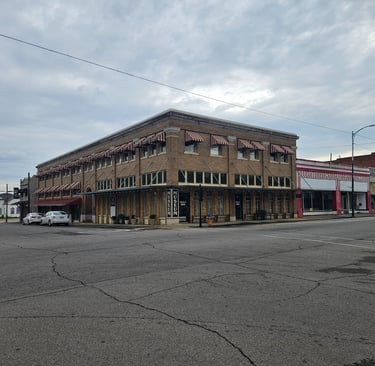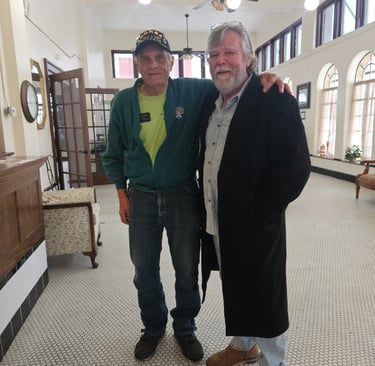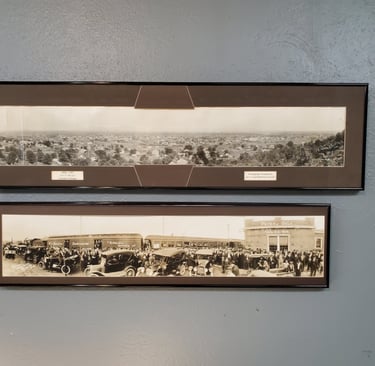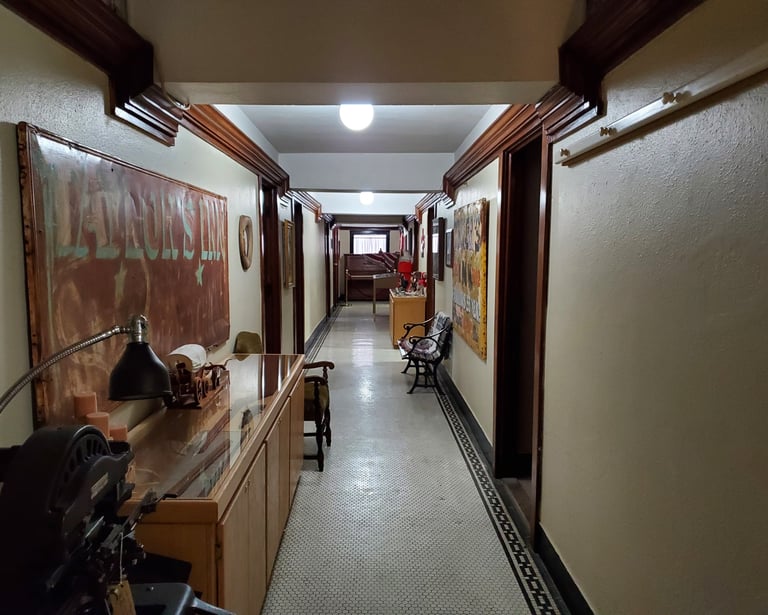What's Stopping You? Change Your Life!
At The Foot of the Hill
Remembering Poteau and it's People
WILLIAM
10/26/20254 min read


We arrived in Poteau late on a Thursday afternoon. I was tired, Mary was tired, and the Tundra was tired. We headed for our usual hotel, the SureStay by Best Western (kind of a Best Western…ish), located on Broadway Street—the main thoroughfare in Poteau. Broadway was established as an early roadway roughly aligned with a railroad, a common theme among rural towns. The road runs parallel to the line of the St. Louis & San Francisco Railway, locally called the Frisco Railroad. It’s not difficult to find North Broadway—it’s the only multilane roadway in town.
Some towns seem to have chosen their geography; others were chosen by it. To the west rises Cavanal Hill—"the world's highest hill", here in Oklahoma—and to the east stands Sugarloaf Mountain, with Poteau folded neatly into the valley where the Poteau River curves.
To understand Poteau is to understand how the land, the people, and the rails pulled each other into being.
When I travel, I’ve found that to truly learn about a place, I have to immerse myself in it. How can I understand a people if I don’t understand their history? I touched on this briefly in my blog on Sekigahara, Japan—that to understand how a people became who they are, I need to understand how they got there.
To do this, I recommend talking to people. Talk to strangers—bank tellers, store clerks (liquor store clerks will give you the best gossip). Go to car shows, restaurants, and especially the local museum. Every small town has a museum devoted to its collective history. They’re usually filled with donated items from local residents, but they’re a wealth of information. A local museum will tell you about the characters who founded the town, their war veterans, how the economy was formed—and there’s always a ghost story.
I like me a good ghost story.
Poteau is home to the LeFlore County Museum, located in downtown Poteau at the corner of Dewey Avenue and Witte Street, inside the restored 1922 Hotel Lowrey. The hotel’s history is remarkable, and at some point, I’ll write more about it.
The building itself is a relic of a different boom: tall windows, brickwork with gentle flourishes, and a lobby that once welcomed travelers fresh from the train depot just down the street. The building is beautiful. Now, instead of guests with valises, it holds rooms of memory.
On the second floor, the Veterans Room tells the stories of local men and women who fought in wars far from this quiet valley. Nearby, artifacts from the Spiro Mounds connect the modern Choctaw to their ancient predecessors with shell carvings, copper plates, and delicate pottery. Each room preserves some aspect of the area—rail maps, miners’ helmets, and black-and-white photos of workers whose faces are both tired and proud.
Every exhibit carries the feeling of a place that knows how to endure change. Even the building’s bones echo with that rhythm: grand in the 1920s, silent through the decline of passenger trains, and resurrected as a museum by locals who refused to let history fade into rumor.
On our visit, we were fortunate enough to have a personal tour guide—Mr. Bill Bledsoe, a 95-year-old Korean War veteran who continues to serve his community, now as a docent. He’s a fascinating man with countless personal stories that he weaves seamlessly into local history. He knows every bit of history from this region and shares it generously. An amazing man with an amazing memory.
If you go (and you should if you’re in the area—admission is free), seek this man out.
Thank you, Bill. Thank you for the tour, and thank you for your service.
It was difficult leaving the museum. We had come planning to spend an hour but ended up spending an afternoon with Bill. Outside the museum, the streets are quiet, lined with the echoes of old storefronts and the outline of Cavanal Hill in the distance. The museum is a reminder that even the smallest of towns can have some of the biggest impact on a person.
Don’t be afraid to get out there and talk to some strangers. They're afraid of you too.
If You Go
LeFlore County Museum — 303 Dewey Ave, Poteau. Housed in the historic Hotel Lowrey. Open Tues–Sat, 11 a.m.–3 p.m. Free admission; donations welcomed.
Spiro Mounds Archaeological Center — About 20 miles northwest; guided tours explore one of North America’s great prehistoric mound sites.
Cavanal Hill — Drive or hike to the summit for sweeping views of the valley and Poteau’s red-brick downtown.
Talimena Scenic Drive — Begin your route east of town for one of Oklahoma’s most beautiful mountain roads, especially in autumn








